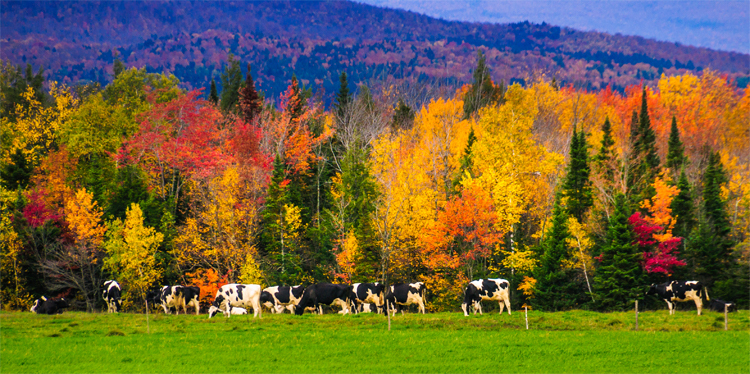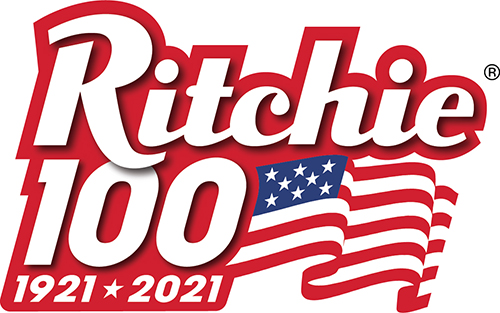
Consumers continue to love dairy products, with 91% and 92% of folks nationwide consuming milk and cheese, according to a 2019 U.S. Department of Agriculture funded report compiled by Atlantic Corporation. Consumers are also increasingly interested in how their food is produced, who produces it, how animals are cared for, and the impact on the environment. A recent 2020 dairy consumer survey revealed that almost half of the respondents would purchase more products from companies that make animal welfare a core part of its business philosophy, and about three-quarters would pay a premium for these products.
Dairy farmers have been proactive in this area, with more than 99% of the U.S. milk supply coming from farms that participate in the National Dairy Farmers Assuring Responsible Management (FARM) Program. One of the key areas that FARM focuses on is animal care. Keeping dairy cows comfy has become a top priority at many dairy farms.
What makes a comfy cow?
Cow comfort is important to milk production, milk quality, reproductive efficiency, and the overall health and well-being of the cow, including the physiological and emotional/behavioral needs. Fine tuning the environment and management practices can lead to increased milk production and economic benefits to dairy operations of all sizes.
Aspects of cow comfort include:
• Appropriately designed, soft and clean resting space that limits injury and/or disease.
• Protection from cold, wind, rain, and sun.
• Effective cooling and ventilation.
• Proper lighting with illumination and color levels.
• Optimum stocking density.
• Good cow grouping according to social structure and behavior.
• Freedom of movement.
• Access to high-quality feed.
• Access to fresh, clean water on demand.
A comfy cow is a hydrated cow
Water is the single nutrient that can impact milk production the most drastically. Milking cows drink between 30 to 50 gallons of water per day to produce a nutrient packed product that is itself typically 87% water.
“I always tell my clients that water is the most essential nutrient because without access to good, clean, fresh water you will limit the animal’s ability to perform,” said Dr. King Hickman, D.V.M., and founding partner of GPS Dairy Consulting in Sheldon, Iowa. “You want to make sure that you are testing the water periodically to make sure it’s not high in sulfates, nitrates, manganese, or iron to ensure good water quality. Another issue I see most commonly is not providing enough water space for the size and capacity of the pens, and the waterers may be undersized. A simple rule of thumb is to plan for two linear inches of water space per lactating cow. You need to have enough space around your water troughs so that the animals can get a drink while other animals can still pass through so the area doesn’t become a bottleneck.”
According to David Beede, Ph.D. and former C. E. Meadows Endowed Chair of Dairy Management and Nutrition in the Department of Animal Science at Michigan State University, dairy cattle will consume as much as 50% to 60% of their total daily water consumption immediately after milking when given a choice. This behavior has influenced the modern designs of milking barns with waterers strategically placed in return alleys, breezeways, or crossovers. Waterers need to have an adequate refill rate to ensure that all the cows can drink as much as they want during a brief period of time.
“Waterers that don’t perform well, meaning they weren’t filling quick enough, can negatively impact milk production,” said Dr. Hickman. “You need enough water pressure and enough flow to meet the water demands of your cattle. Think about a water fountain that you or I might drink from where the water just barely dribbles out and you have a hard time getting enough water at one time. Or think about a water fountain that has too much pressure and the water just shoots out of the bowl. The availability of enough water for your animals is crucial to prevent subclinical dehydration in dairy cattle.”
New construction or upgrading facilities? Consider new automatic waterers for cow comfort and performance
When Aaron Stauffer of Stauffer Farms in North Lawrence, N.Y., began planning on a major expansion to the family-owned dairy farm in 2009, he partnered with ag construction specialists Franklin Builders of Chambersburg, Pa., to build a modern and efficient operation that keeps cow comfort top of mind.
“It was a greenfield construction site and we expanded to house 3,800 total cows across two milking parlors and five barns,” said Stauffer, co-owner of Stauffer Farms. “When we started planning for the waterers, the foreman at Franklin Builders recommended Ritchie waterers and I was good with that. Since 2009, we have installed 56 Ritchie WaterMaster 1200 waterers, and I can say that certainly compared to other brands I have had in the past, I have had less trouble with the Ritchie waterers and they have worked very well. We have been able to run these units energy free with little to no icing.”
He continued, “Our water pressure here in North Lawrence is fairly high, and we use the high pressure water valve from Ritchie to make sure we have the proper flow to the waterers – roughly 16 to 22 gallons per minute. Our Ritchie waterers are pretty low maintenance and once we got the pressure and flow figured out, we really didn’t have to make any adjustments and the units have been very durable. We had a couple that developed some cracks and Ritchie stands behind their product with an outstanding 10-year warranty. I just had to send a picture of the crack and the date code on the unit and Ritchie took care of it right away. In 2021are adding a new heifer barn for animals of weaning age up to one year old. We are installing 26 more Ritchie waterers, and we will run heat to those units because the heifer barns usually run a little colder.”
Stauffer Farms currently milks 3,300 cows three times a day utilizing two double twenty-four parallel parlors. Daily production is roughly 88 pounds per cow. The majority of the milk is shipped to Dairy Farmers of America.
“A lot of our milk goes to the Great Lakes Cheese plants in Adams, N.Y., and Cuba, N.Y., and also the Kraft Lowville cream cheese plant,” said Stauffer. “Our goals for the future include continuing to take advantage of opportunities to remain competitive in the industry. We are always evaluating ways to improve our bottom line and even minor decisions like using high quality waterers help our farm run efficiently and profitably.”
Choose automatic waterers that enhance your cow’s well-being
There are two main types of dairy waterers on the market currently — concrete and polyurethane waterers (with or without stainless steel troughs). Other options include insulation, heating elements, and constant flow valves.
“Whether you are looking to install new construction or upgrade your waterers, it is important to consider how they fit into the overall facility design and how that impacts the comfort of the cows,” said Jeff Miller, Ritchie Industries Sales and Marketing Manager. “Compare how fast they refill, how durable the units are, maintenance requirements, warranty coverage, and how easy they are to clean. For 100 years, Ritchie has been made in America and we produce the fastest, energy efficient founts in the industry. We have expertly engineered valves to serve any water pressure environment, and your dairy cows won’t be able to outdrink a Ritchie. Our OmniMaster series is the latest in large herd innovation with a newly designed high-capacity drain to maintain the cleanliness of the fount. Every single Ritchie fount meets all Grade A dairy requirements, and our entire product line-up has been designed with animal safety and comfort in mind. All of our stainless steel troughs have hemmed and smooth edges and our poly units have smooth, curved surfaces. Our poly units are also 75% more efficient than comparable concrete units, they won’t pit, and we offer several models that may qualify for utility incentives in numerous states. It all adds up to a more efficient, clean and comfortable drinking environment.”
The bottomline – A comfy cow is a productive cow
A comfy cow is a healthy and happy cow that rests, exercises, eats, and drinks at a level to optimize milk production. Dairies successful at prioritizing cow comfort pay attention to every little detail, and that pays big dividends. How big? In a study of 114 dairy farms in Ontario, Canada, cows that were bedded with deep, dry sand produced on average over 2,400 extra pounds of milk per year over their counterparts that had less preferred bedding options. So go ahead and make your cows comfy.
For more information visit:
Ritchie Industries | RitchieFount.com
GPS Dairy Consulting | Who We Are - GPS Dairy Consulting, LLC
Stauffer Farms Virtual Farm Tour | Virtual Farm Tours | American Dairy Association Northeast
